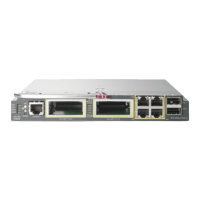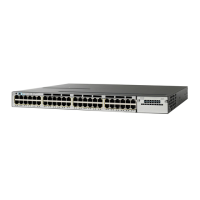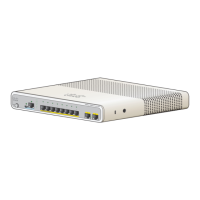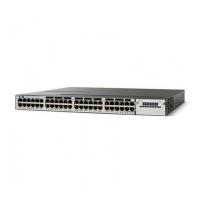The BSR mechanism is specified in RFC 2362. Candidate RP (C-RP) switches unicast C-RP advertisement
packets to the BSR. The BSR then aggregates these advertisements in BSR messages, which it regularly
multicasts with a TTL of 1 to the ALL-PIM-ROUTERS group address, 224.0.0.13. The multicasting of these
messages is handled by hop-by-hop RPF flooding; so no preexisting IP multicast routing setup is required
(unlike with AutoRP). In addition, the BSR does not preselect the designated RP for a particular group range
(unlike AutoRP); instead, each switch that receives BSR messages will elect RPs for group ranges based on
the information in the BSR messages.
Cisco switches always accept and process BSR messages. There is no command to disable this function.
Cisco switches perform the following steps to determine which C-RP is used for a group:
•
A longest match lookup is performed on the group prefix that is announced by the BSR C-RPs.
•
If more than one BSR-learned C-RP are found by the longest match lookup, the C-RP with the lowest
priority (configured with the ip pim rp-candidate command) is preferred.
•
If more than one BSR-learned C-RP have the same priority, the BSR hash function is used to select the
RP for a group.
•
If more than one BSR-learned C-RP return the same hash value derived from the BSR hash function,
the BSR C-RP with the highest IP address is preferred.
Examples
The following example shows how to configure the IP address of the switch on Gigabit Ethernet interface
1/0/0 to be a BSR C-RP with a hash mask length of 0 and a priority of 192:
Device(config)# ip pim bsr-candidate GigabitEthernet1/0/1 0 192
Command Reference, Cisco IOS XE Everest 16.5.1a (Catalyst 3650 Switches)
234
ip pim bsr-candidate
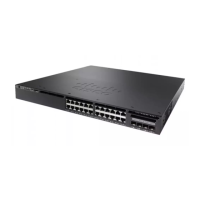
